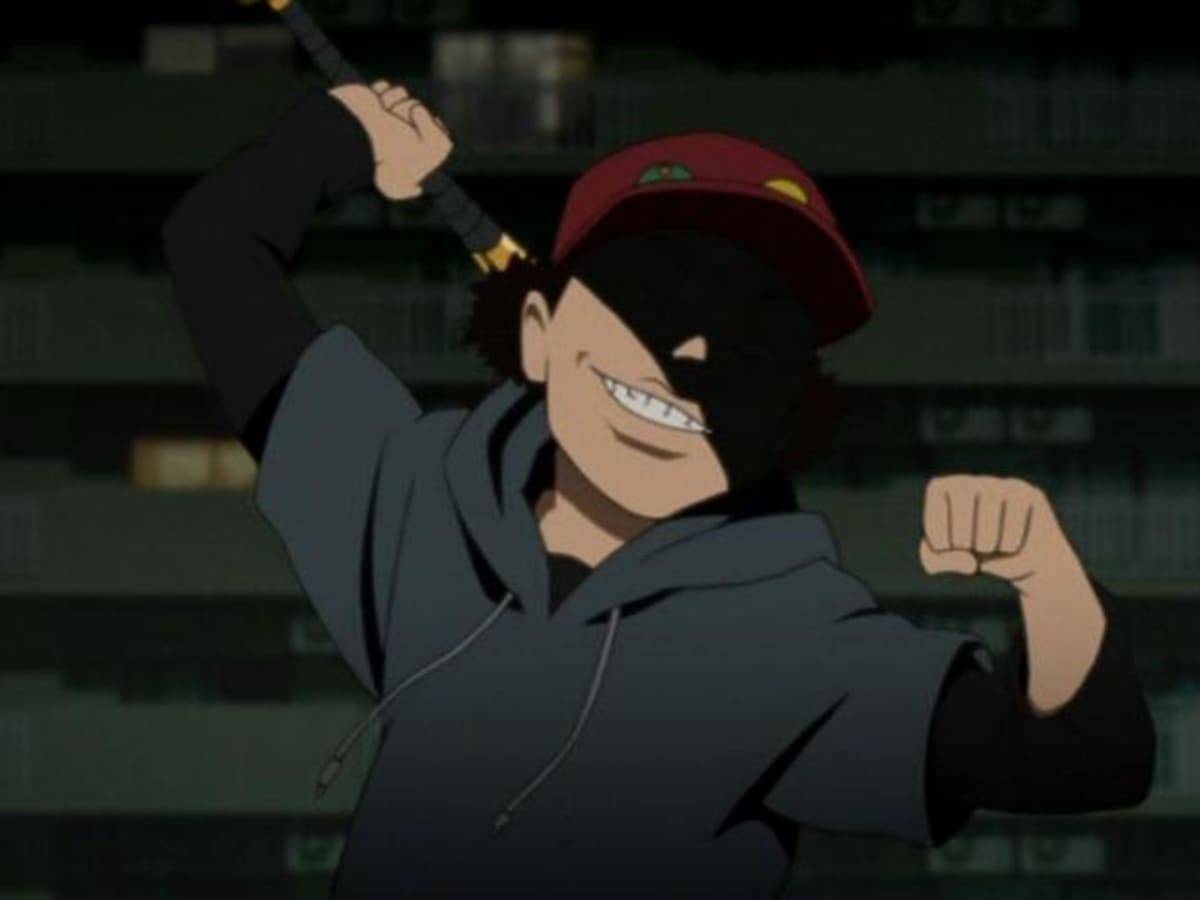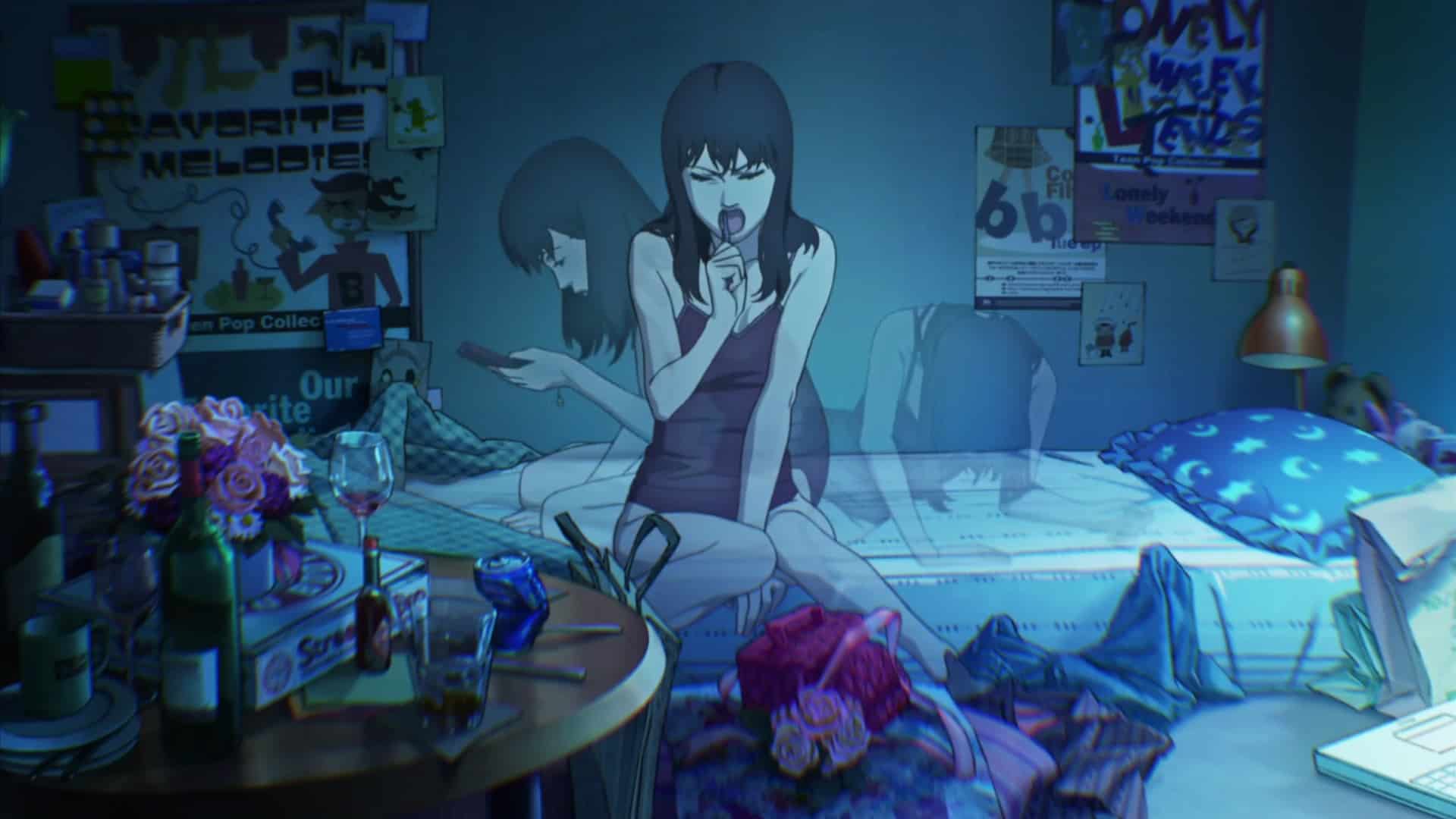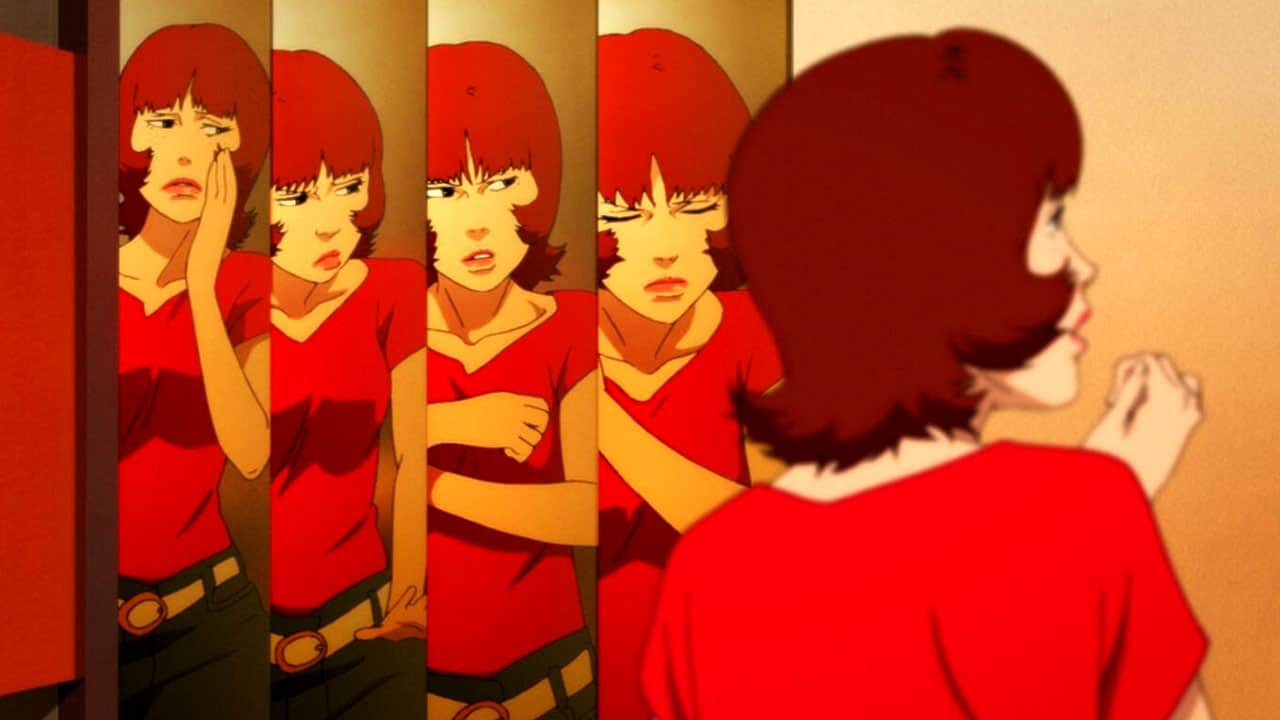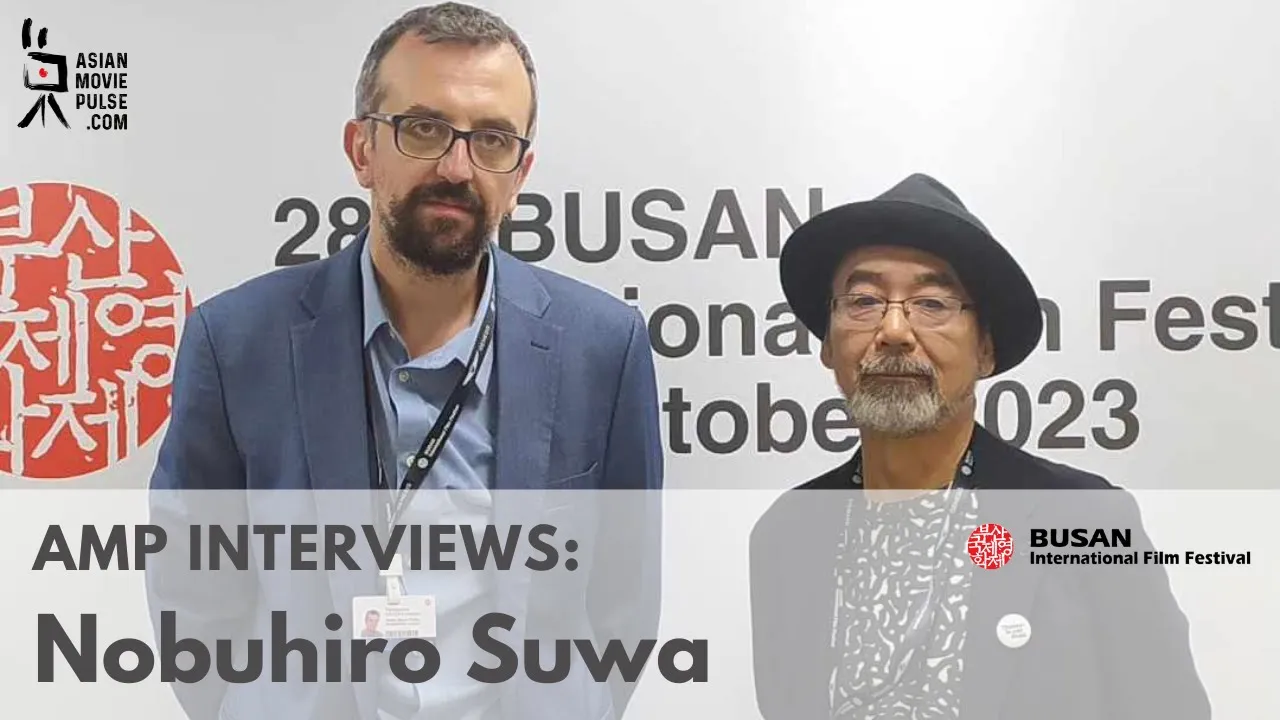Paranoia Agent (2004, Satoshi Kon)

Satoshi Kon was content with his cooperation with Madhouse that immediately after he concluded shooting “Tokyo Godfathers”, he proposed to shoot a TV anime series. The script would be based upon a few of his concepts that he had not used before, as well as newspapers' headlines, particularly their crime and social ones. The leadership of the company accepted, leading to initiating the creation of the 13 episodes of “Paranoia Agent”.
A series of attacks occur in Tokyo, seemingly to individuals irrelevant to each other. The victims appear not to recollect any facial characteristic of the perpetrator; however, they all state that he seemed like a high school student in terms of figure and that he was wearing golden roller skates, a baseball cap and he was carrying a sort of arched baseball bat. The attacks gain publicity due to their frequency, resulting in the creation of an urban legend concerning the culprit, who people call “Shonen Bat”. Detectives Keiichi Ikari and Mitsuhiro Maniwa investigate the case, attempting to arrest the violator and to discover any affiliation between the victims.
This time, the script not only mixes fantasy and reality, it dissolves every boundary between them, with the latter imposing on the former and vice versa. His usual social commentary is also present, this time concerning modern life and the fears that undermine the seemingly civil facade of contemporary society. Expectantly, Kon presents the aforementioned in his unique, surrealistic sharpness.
The staff of “Paranoia Agent” were accustomed to creating theatrical animation, thus the quality of the drawing is exquisite, significantly surpassing the standards of the anime industry.
Equally impressive is the fact that every aspect of the series, from the characters' names to the previews of the following episode, includes evidence concerning the case, a fact that stresses Kon's attention to every single detail.
Rouven Linnarz writes: Over the course of its 13 episodes, “Paranoia Agent” seems like a collection of the themes Satoshi Kon was most concerned with, judging by his features. The concept of the doppelgänger, as introduced in “Perfect Blue”, the obsession with fame and media in “Millennium Actress” and “Perfect Blue” as well as the various facets of the Japanese capital and its “lost children” as shown in “Tokyo Godfathers” are just a small list of ideas explored in the series. However, “Paranoia Agent” might just be the pessimistic predecessor to “Paprika”, especially given its portrayal of the modern urban landscape as a working system, much like a computer, with “shonen bat” essentially working as a kind of virus spreading chaos and destruction, and possibly laying the foundation for this human house of cards to finally collapse.
Geneon distributed “Paranoia Agent” in the US, releasing four DVDs in 2004, whereas a dubbed version aired in 2005.

Paprika (2006, Satoshi Kon)

In 2005, Kon begun shooting what came to be his last completed feature and his biggest commercial success. Based on the homonymous novel by Yasutaka Tsutsui, “Paprika” concerns a machine that enables doctors to infiltrate their patients' dreams, in order to treat their psychological issues. Kon could not stay away from a story like that.
Dr. Atsuko Chiba is the head of a research team that experiments on potential uses of the aforementioned device, called DC-Mini. When she dives into the subconscious of her patients, she uses an alternate persona, by the name of Paprika, chiefly due to the use of the device being illegal. Dr. Kosaku Tokita, inventor of DC-Mini and a renowned genius in the field, is her closest ally. Before the government allows the use of the machines, unknown perpetrators manage to steal three of them. What is even worse is that at the time, the DC-Minis still lacked any type of access restriction, allowing anyone to enter another person's dream. The result is that after a while, the dream world and the real world unite with catastrophic results.
Once again, Kon's script is complicated, since, as in “Paranoia Agent”, the majority of the details play a role in the story and the dreams of each of the various characters mix with reality and with dreams of others, thus resulting in a chaotic film. However, this is where Kon's genius lies.
The presentation of the characters, along with the animation of the environment and the music score culminate in such a visually accomplished result, that the spectator has to sit and watch it voicelessly, even when the lack of cohesion in the script is quite evident. It is the type of oneiric cinema that appears in Wim Wenders' and Wong Kar Wai's films, which is perceived with senses rather than logic.
Kon's evident exuberance results in aesthetics' extravaganza, whose unfathomable imaginativeness, surrealistic drawing, grotesque iconography and technical superiority created new horizons for a genre that seemed not to have any more to present, at the time. “Paprika” was Satoshi Kon's magnum opus.
Rouven Linnarz writes: With his final work “Paprika”, Satoshi Kon joins the tradition of the great dystopias, creative minds such as George Orwell or Aldous Huxley, showing how scientific and technological advances may threaten the definition of what is humanity and reality. Interestingly, there seems to be no specific political or economic system behind the development of the “DC Mini”; in fact, the head of the company continually emphasizes his skepticism for the device and wants to limit its spread. Rather than delve into these spheres, Kon concentrates on the way technology changes what we define as mankind and indeed our perception, and while it has not been used for purposes other than what its inventors had in mind, it becomes clear to the characters (and the viewer) how that potential is there and ready for the taking for any regime willing to enter the minds of its subjects, aiming to make them compliant and content.
Sony handled the distribution once again, premiering the film at the Venice Film Festival. “Paprika” was screened at a plethora of festivals around the world winning a number of prizes.
Good Morning (2007)

This was a segment of Ani*Kuri 15, a series of 15 one-minute anime shorts, each from a different director. Kon directed the last one, concerning a girl who tries sleepily to wake up.
Again, the animation and the artwork are beautiful, in a fully realized concept.
Satoshi Kon died of pancreatic cancer in August 24, 2010. He was 46 years old.
Satoshi Kon, The Illusionist (2021, Pascal-Alex Vincent)

Rouven Linnarz writes: In his documentary “Satoshi Kon, The Illusionist” French director Pascal-Alex Vincent, who previously made “Miwa, A Japanese Icon” about actor Akihiro Miwa, tells the story of arguably one of the most important filmmakers in anime, his work, his themes and the reasons he should be considered an auteur in his own right.
Given its aforementioned focus, Vincent's documentary manages to give an insightful journey into the work of Satoshi Kon. While the amount of information and aspects is quite high, what shines through is how passionate Kon felt for each of his projects, exploring themes such as the blurry lines between reality, fiction and dream along with issues like identity, gender and the modern world. While the individual is a shattered entity like in “Perfect Blue” or “Millennium Actress”, society becomes a reflection of this ongoing fragmentation, this paranoia and schizophrenia, with no truths and facts being stable. With regard to its number of examples, Vincent shows these recurring themes in Kon's work as well as how he saw the various realities and modes of perceptions in our modern world, for example, the idea of the modern icon as in “Perfect Blue” or how cell-phone-technology shapes or view on the world.













